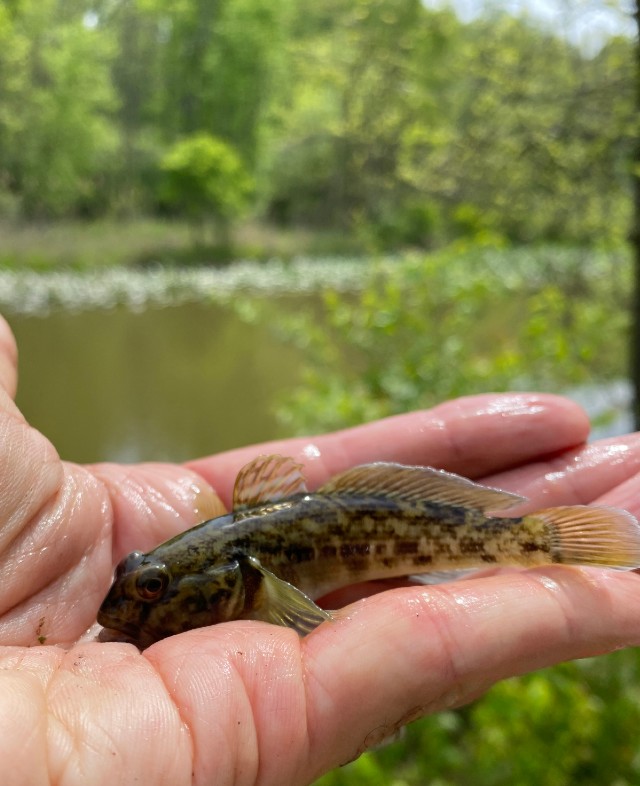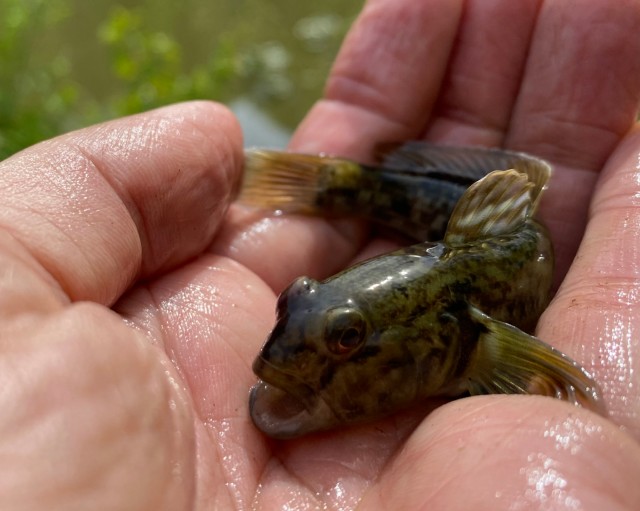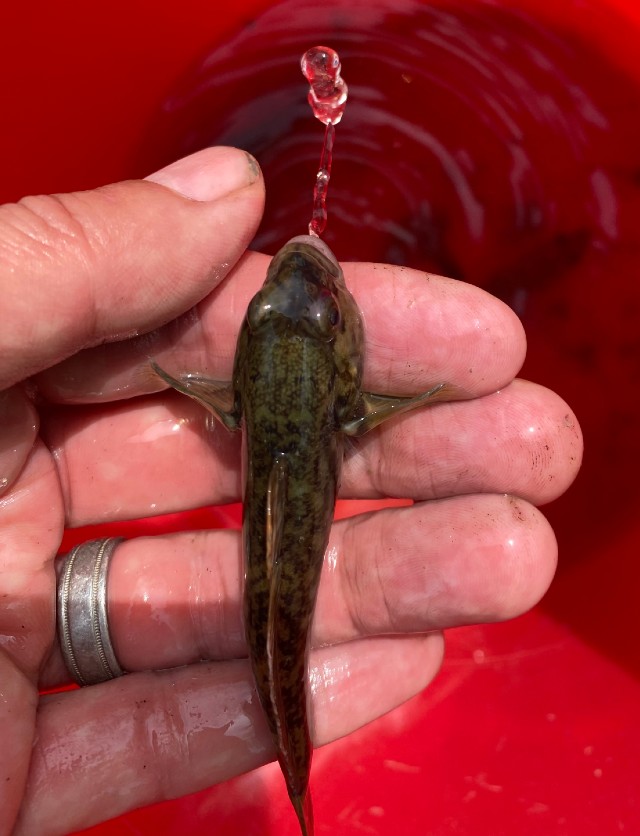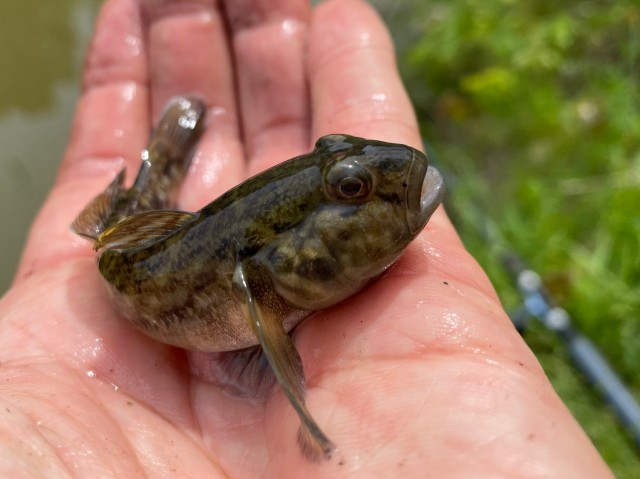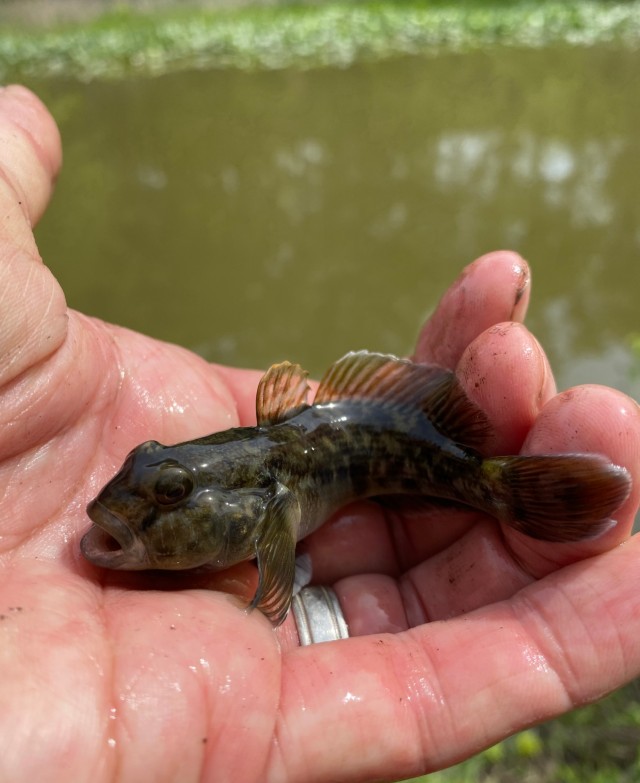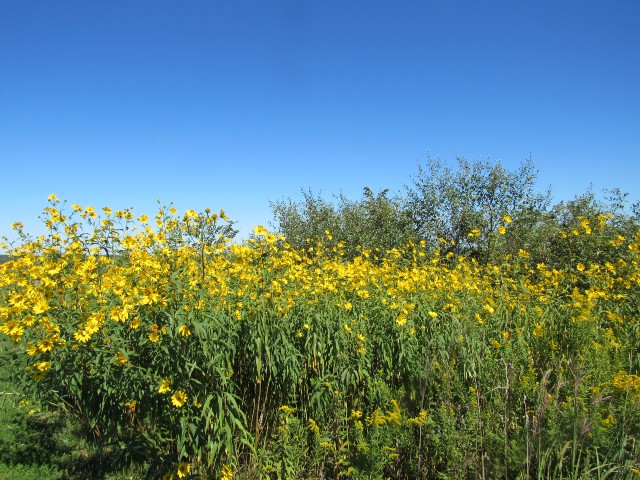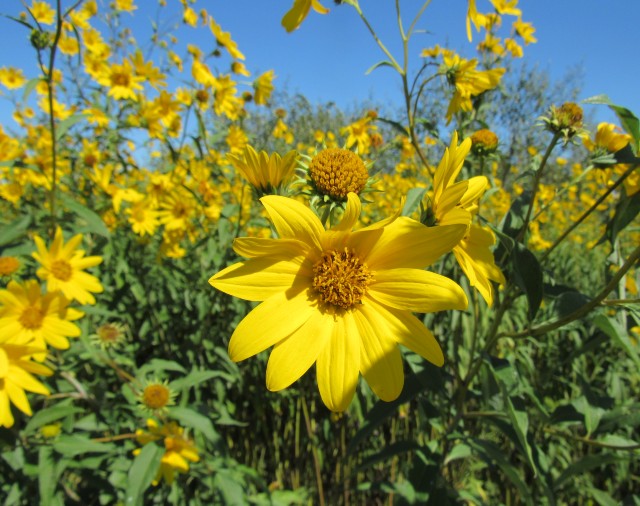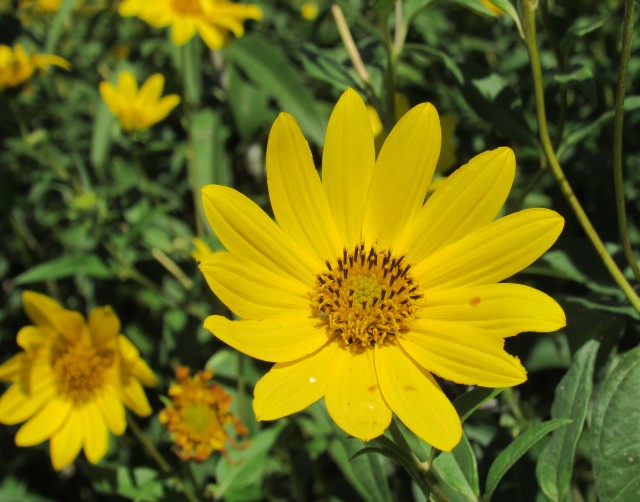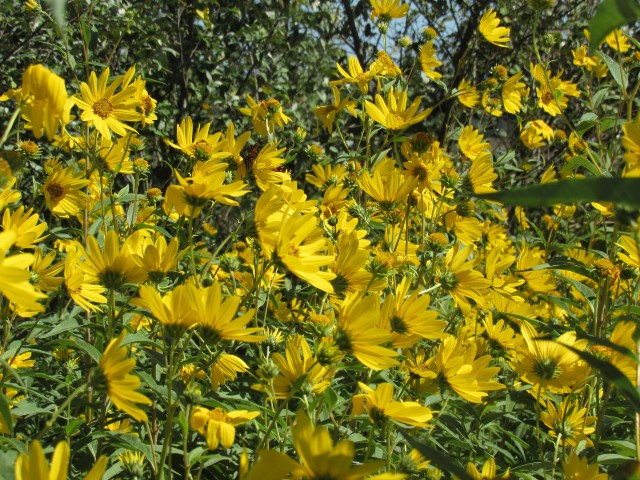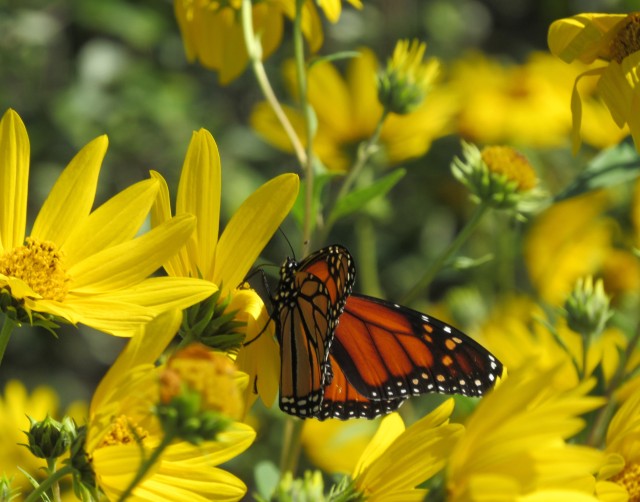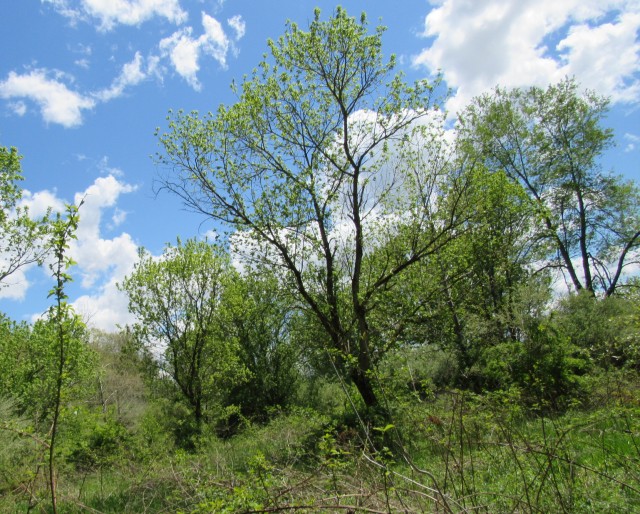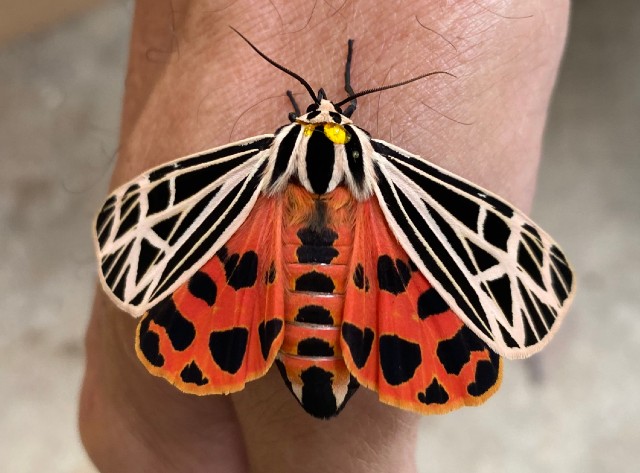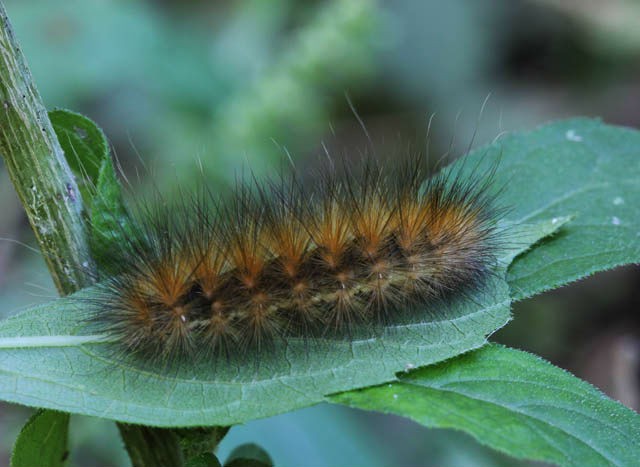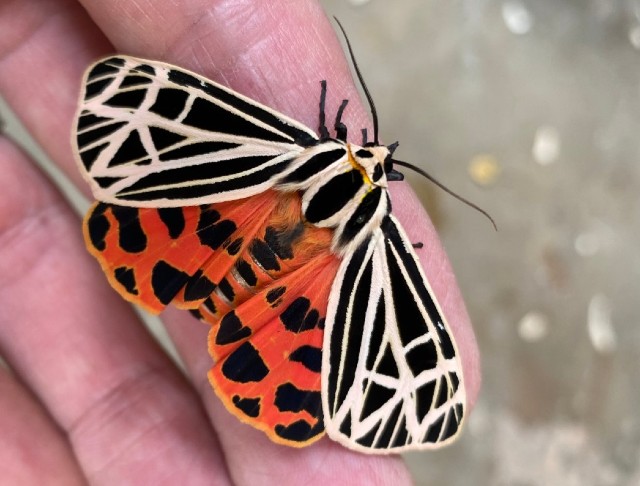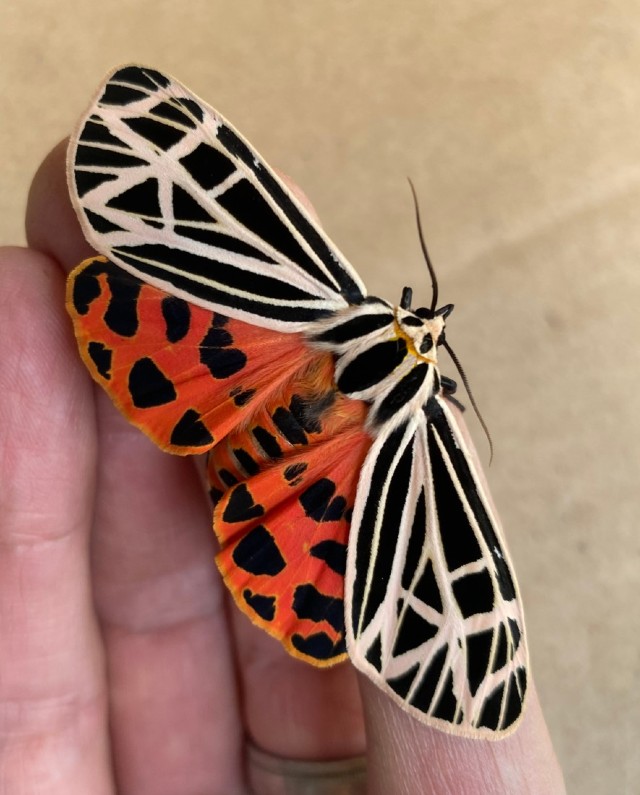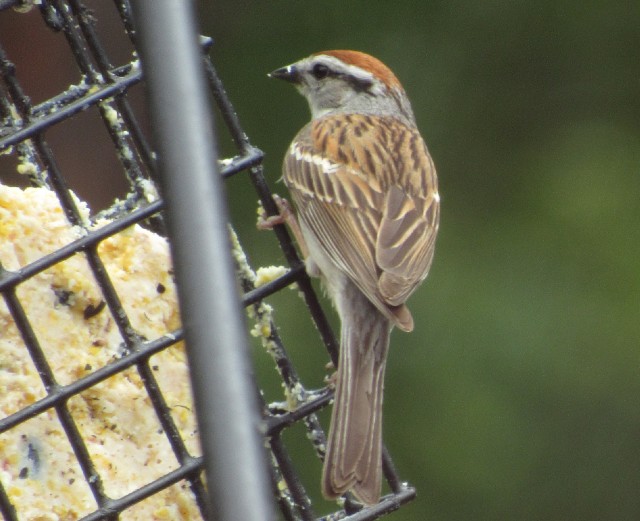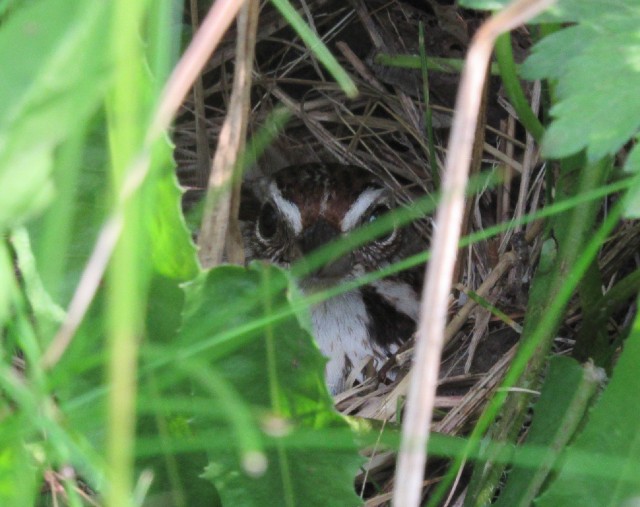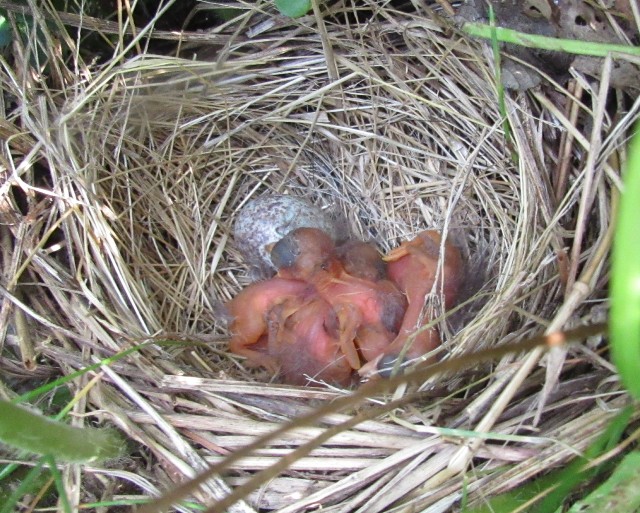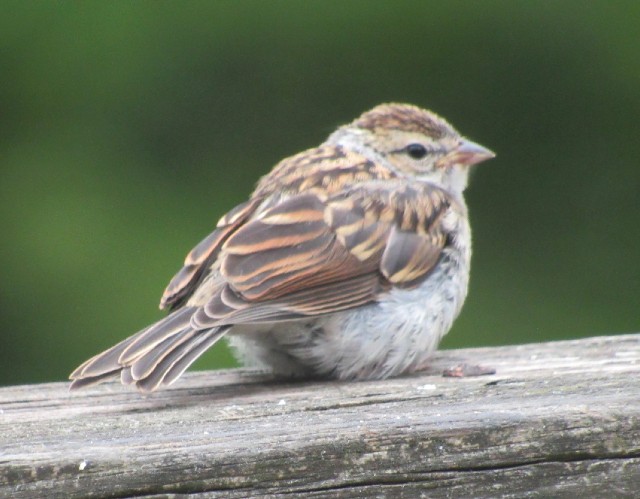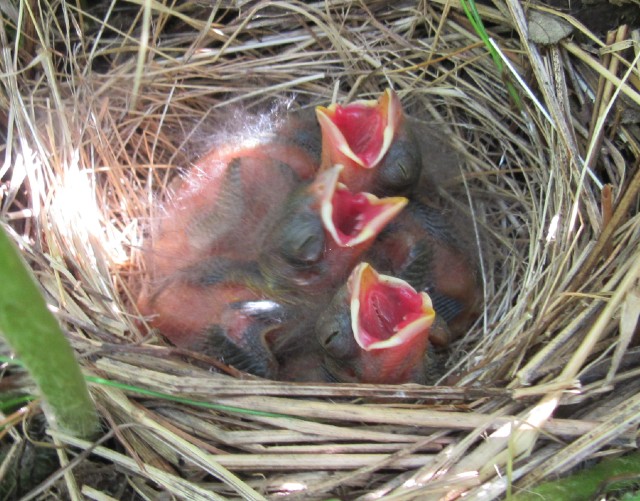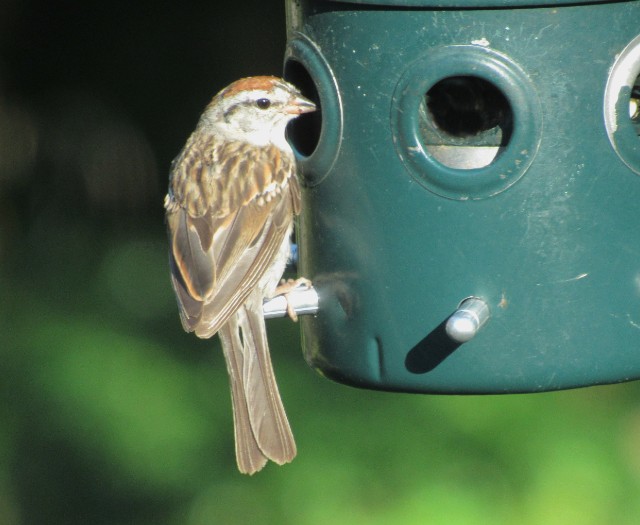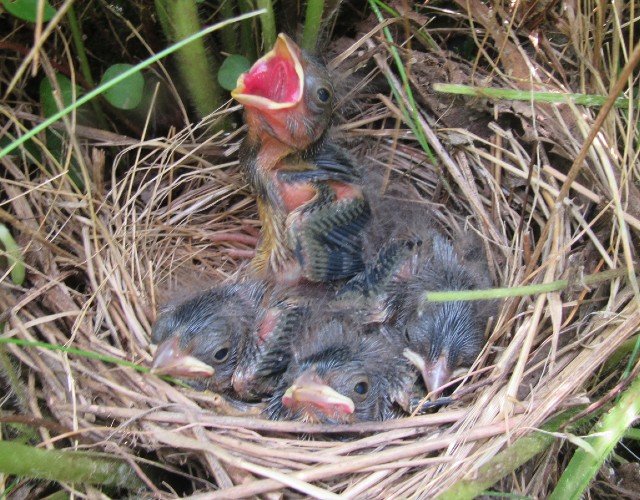While fishing in the Ohio & Erie Canal, I caught something that I’ve never seen before. This fish is native to Eurasia where it is often found in brackish water. It was unintentionally introduced into Lake Superior from the Black Sea via freighter ballast.
Since that time, it has spread to all of the Great Lakes, where it is undergoing a dramatic population explosion (densities of several dozen per square meter of lakebed have been reported).
Round Gobies are small, soft-bodied fish characterized by a distinctive black spot on the first dorsal fin (which this example is seems to be missing). Their eyes are large and protrude slightly from the top of their head and, like most gobies, the pelvic fins are fused to form a single disc (shaped like a suction cup) on the belly.
These fish feed both nocturnally and diurnally and are believed to detect prey only while stationary. Their primary diet includes mollusks, crustaceans, worms, fish eggs, zebra mussels, small fish, insect larvae and other small invertebrates living on the bottom of lakes and streams.
The consequences of its accidental introduction are quite complex, as this fish both competes with native species and provides an abundant source of food for them, while consuming other invasive species (particularly Zebra Mussels).
The Round Goby’s robust ability to survive in degraded environmental conditions has helped to increase its competitive advantage over other fish. Although it is a controversial invasive species, it was neat to come across this unexpected find while fishing.


